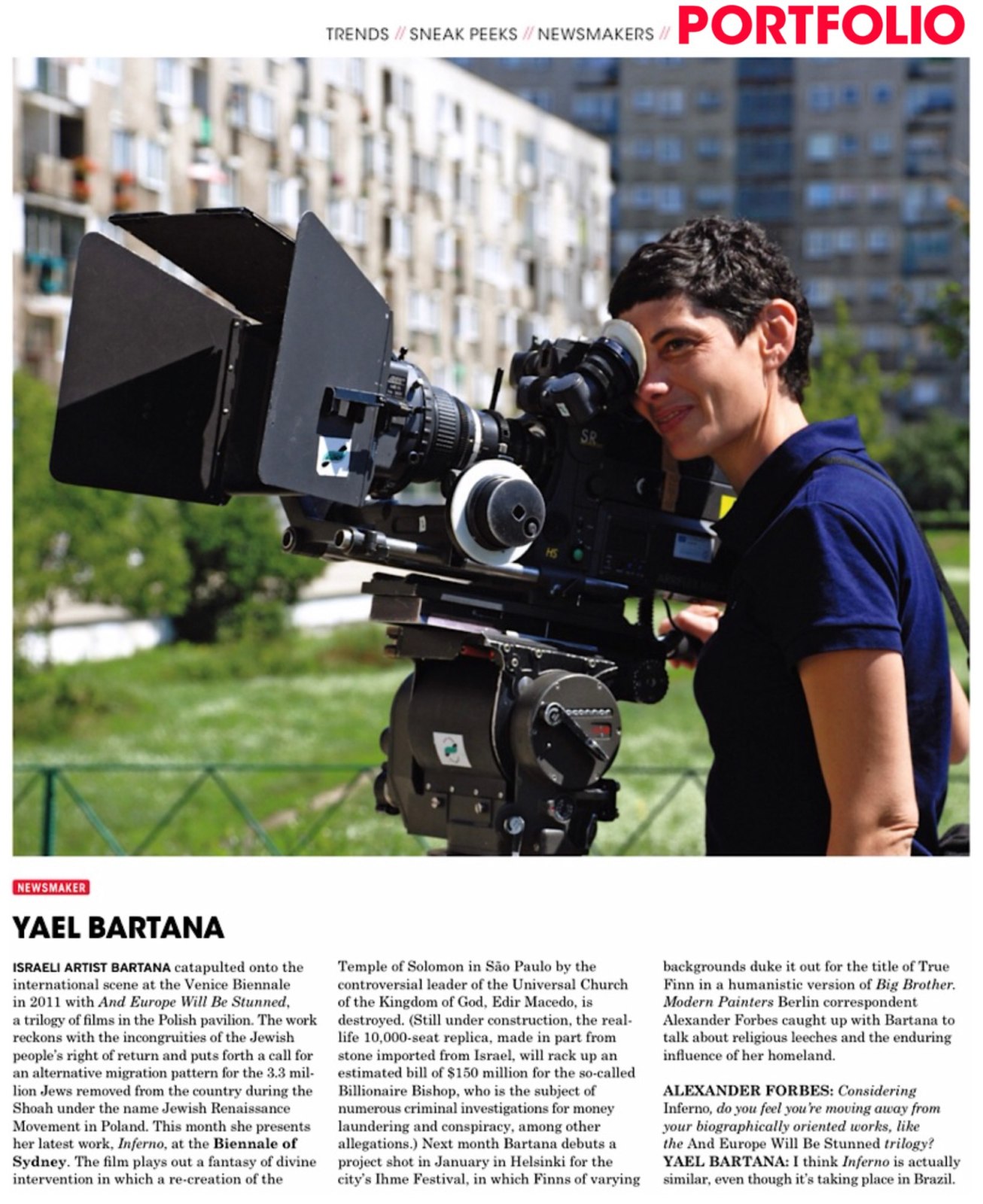
In February of last year, Poland’s president, Andrzej Duda, made it illegal for citizens to suggest that their nation bears any responsibility for the horrors of the Holocaust. Though the Holocaust law, as it became known, was revised several months later to remove criminal penalties for infractions, its program of historical erasure was evidence of the strong resurgence of anti-Semitism in a nation once home to more than three million Jews.
These national debates over the legacy of the Holocaust lend new interest to Israeli artist Yael Bartana’s film trio And Europe Will Be Stunned, 2007–11, shown in the Polish pavilion at the 2011 Venice Biennale and on view through the first of this month at the Philadelphia Museum of Art in an exhibition curated by Amanda Sroka. The series envisions an alternate Poland willing to both recall and redress its complicity in Nazi genocide, and tells the story of the fictional Jewish Renaissance Movement in Poland (JRMiP), a group intent on restoring Poland’s prewar Jewish population. As the JRMiP’s charismatic leader, played by Sławomir Sierakowski, exclaims in the first video, Mary Koszmary (Nightmares), 2007, “We want three million Jews to return to Poland, to live with us again! We need you! We are asking you to return!”
Despite the improbability of such a platform, Bartana makes the JRMiP look like a credible movement (so much so that some viewers debated whether or not the films were fictional). She designed a JRMiP emblem in the form of a Star of David melded with the Polish national symbol, the white eagle, and penned a brash group manifesto, printed on large posters offered to visitors at the show’s exit. She also populates her films with real political figures—Sierakowski is a well-known Polish left-wing activist—and stuffs them with historic tropes designed to give scenes the gloss of a twentieth-century documentary or newsreel. As attested by a display case filled with photographs that inspired the films, Bartana’s aesthetic borrows liberally from the iconography of World War II, early Zionist movements, and the USSR. The adoring, low-angle shots of Sierakowski in Mary Koszmary (Nightmares) recall Triumph of the Will, Leni Riefenstahl’s 1935 ode to Adolf Hitler. In the second film, Mur i wieża (Wall and Tower), 2009, Poland’s first wave of Jewish settlers arrives in Warsaw dressed in kerchiefs and cargo pants similar to those worn by kibbutz builders and Israel Defense Forces soldiers in the 1930s and ’40s. When Sierakowski is laid to rest in the last film, Zamach (Assassination), 2011, the state funeral has all the solemn pomp of a Soviet affair; it even includes a monumental stone effigy to the martyred hero, which towers over those who have come to mourn him.
Bartana plays with history, but her intent is to alleviate pain, not erase it. A form of anti-revisionist revisionism, And Europe Will Be Stunned departs from the facts of the Polish Holocaust only to mold that event’s aftermath to meet the psychic needs of the Jewish diaspora—and, as the JRMiP manifesto suggests, those of Polish citizens, too. “We wish to heal our mutual trauma,” the document declares. “We long to write new pages into a history that never quite took the course we wanted.” That even Bartana’s fantasy history veers off course, ending in an assassination, points to the imagination’s limits: The sting of Polish anti-Semitism and the violence of the contemporary Israeli state—allusions to which lurk behind each reference to Jewish settler movements—foreclose a happy ending. It is hard to erase the horrors of the past and harder still, perhaps, to tune out the horrors of the present.
— Hannah Stamler